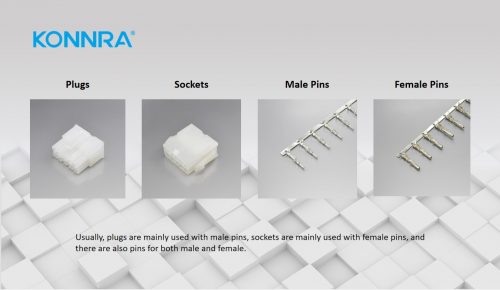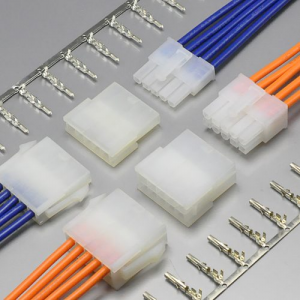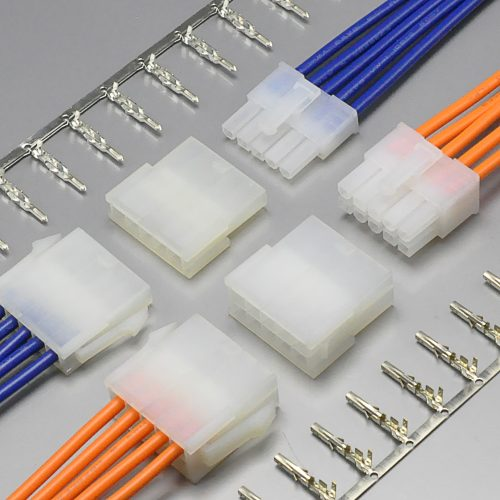Wire-to-wire connector, as the name suggests, is a plug used to realize a connection between two active devices. It covers a wide range of connection forms from wire-to-wire to cable-to-cable. Its core definition lies in the ability of two single-wire individuals or two cables with corresponding wires to realize a permanent connection with each other. This type of permanent connection is particularly prevalent in wire-to-wire connections in fixed connections as well as in IDC connections.
To make up a set of wire-to-wire connectors, you need plugs, sockets, male pins, and female pins.

I. The role of wire-to-wire connectors
1. Stabilization of circuits:
In the circuit connection requirements are not high in the industry, the need for circuit connection can usually rely on two wires directly bundled together to achieve circuit interoperability. But in the higher circuit connection requirements of the industry, it is necessary to use a special wire to wire connector to complete the circuit of the docking, high-quality wire to wire connector using a strong snap design, in the use of wire to wire connector connection to reduce the risk of falling off.
2. Reduce the risk of short circuit
In the circuit connection process users also need to consider the risk of short-circuit accidents, high-quality wire-to-wire connectors can reduce the risk of short-circuit due to cracking of the connection, effectively ensure the safety of electrical equipment, which is also a safety guarantee for household appliances.
3. Meet customized needs
Due to the differences in different industries customers for circuit connection needs, so KONNRA wire-to-wire connectors will be based on user needs to improve the design of the product, so that it can be adapted to the needs of different customers, wire-to-wire connectors can be optimized in terms of volume, connectivity, high quality and low price, this flexible optimization can make the connector products play a role in more industries.
Ⅱ. The specifications of wire-to-wire connectors
1. The number of contacts: refers to the number of contacts on the connector, determines the number of lines that can be connected, such as 2-pin, 4-pin, 6-pin and so on.
2. Pitch: the distance between the center of the contacts, affecting the compactness of the connector and the applicable wiring density, common 1.27mm, 2.0mm, 2.54mm, 3.5mm and so on.
3. Rated current and voltage: the connector can safely transmit the maximum current and withstand the voltage value, to ensure the safe operation of the circuit.
4. Insulation resistance and withstand voltage: measure the performance of the connector insulation material, insulation resistance is usually required to prevent leakage, withstand voltage indicates the maximum voltage it can withstand without breakdown.
5. Contact resistance: the size of the resistance between the contacts, low contact resistance means less loss of signal transmission and more stable data transmission.
6. IP rating: such as IP65, IP67, IP68, etc., which indicates the dustproof and waterproof ability, suitable for outdoor or harsh environment.
7. Material: Contacts are usually gold-plated or silver-plated with copper alloy, and the housing may be made of plastic (e.g. nylon, polycarbonate) or metal to ensure electrical performance and durability.
III. Selection of wire-to-wire connectors
1. Specifications and dimensions: according to the use of the connector environment and the equipment to be connected to determine the specifications and dimensions of the connector. The specifications and dimensions of the connector include the appearance of the shape, the number of interfaces, interface layout and so on. Ensure that the selected connector can match the needs.
2. Transmission performance: consider the transmission performance requirements of the connector. According to the current or signal transmission requirements, select the connector model that supports the corresponding transmission rate and voltage. Also need to consider the stability of the connector and anti-interference capability.
3. Durability and quality: choose a good durability, reliable quality connector models. Connectors need to withstand frequent plugging and use, so durability is an important consideration.
4. Environmental adaptability: according to the use of the connector environment, select the connector model with appropriate environmental adaptability. For example, if the connector will be used outdoors or in harsh environments, you need to choose waterproof, dustproof and other features of the model.
IV. Recommendations for wire-to-wire connector products
KR4200 Series Mini fit 4.2 Wire to Wire Connector

- Self-aligning interface: allows operators to mate connectors in hard-to-reach locations
- Polarized mating geometry: ensures that there is no mismatch between receptacle head and receptacle
- Pressure-locking housing: easy-to-operate thumb latch ensures that the connector is fully mated and cannot be accidentally unplugged.
- End-to-end stackability: delivers more power per length and area than other mid-range power connectors
- Four independent contacts: provides redundant secondary current paths for long-term electrical performance and reliability
- Tangle-free design terminals: Secure terminals during packaging and assembly insertion
- Receptacles and plugs support standard Mini-Fit and Mini-Fit Plus crimp terminals: reduces the amount of product to purchase and put into inventory
- Patented design of terminals with elongated grooves: Provides longer wipe lengths and increased contact area for improved long-term reliability










